The shoebill (Balaeniceps rex) also known as whalehead, whale-headed stork, or shoe-billed stork, is a very large stork-like bird. It derives its name from its enormous shoe-shaped bill. It has a somewhat stork-like overall form and has previously been classified with the storks in the order Ciconiiformes based on this morphology. However, genetic evidence places it with the Pelecaniformes. The adult is mainly grey while the juveniles are browner. Shoebill lives in tropical east Africa in large swamps from South Sudan to Zambia.

They eat big fish like lungfish, eels, and catfish, and also crazy stuff like Nile monitor lizards, snakes, and baby crocodiles.
The shoebill (Balaeniceps rex) also known as whalehead, whale-headed stork, or shoe-billed stork, is a very large stork-like bird. It derives its name from its enormous shoe-shaped bill. It has a somewhat stork-like overall form and has previously been classified with the storks in the order Ciconiiformes based on this morphology. However, genetic evidence places it with pelicans and herons in the Pelecaniformes. The adult is mainly grey while the juveniles are browner. It lives in tropical east Africa in large swamps from South Sudan to Zambia.
Taxonomy and systematics
The shoebill was known to ancient Egyptians but was not classified until the 19th century, after skins and eventually live specimens were brought to Europe. John Gould described it in 1850, giving it the name Balaeniceps rex. The genus name comes from the Latin words balaena “whale”, and caput “head”, abbreviated to -ceps in compound words.
Depending on your perspective, a shoebill either has the same goofy charm as the long-lost dodo or it looks like it might go on the attack any moment.
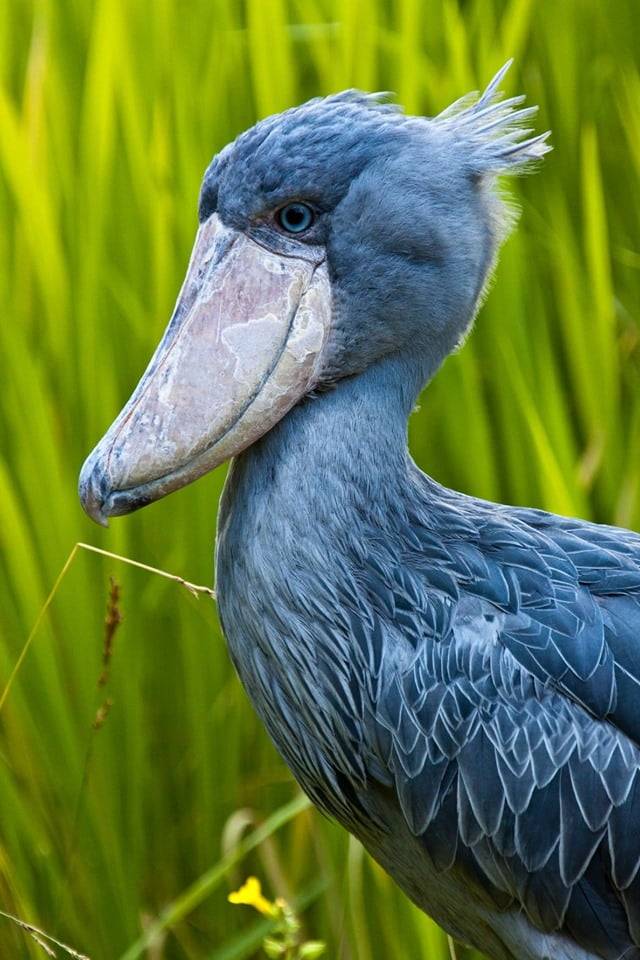
What makes the aptly named shoebill so unique is its foot-long bill that resembles a Dutch clog. Tan with brown splotches, it’s five inches wide and has sharp edges and a sharp hook on the end.

Its specialized bill allows the shoebill to grab large prey, including lungfish, tilapia, eels, and snakes. It even snacks on baby crocodiles and Nile monitor lizards.

At first glance, shoebills don’t seem like they could be ambush predators. Reaching up to five feet tall with an eight-foot wingspan, shoebills have yellow eyes, gray feathers, white bellies, and a small feathered crest on the back of their heads.
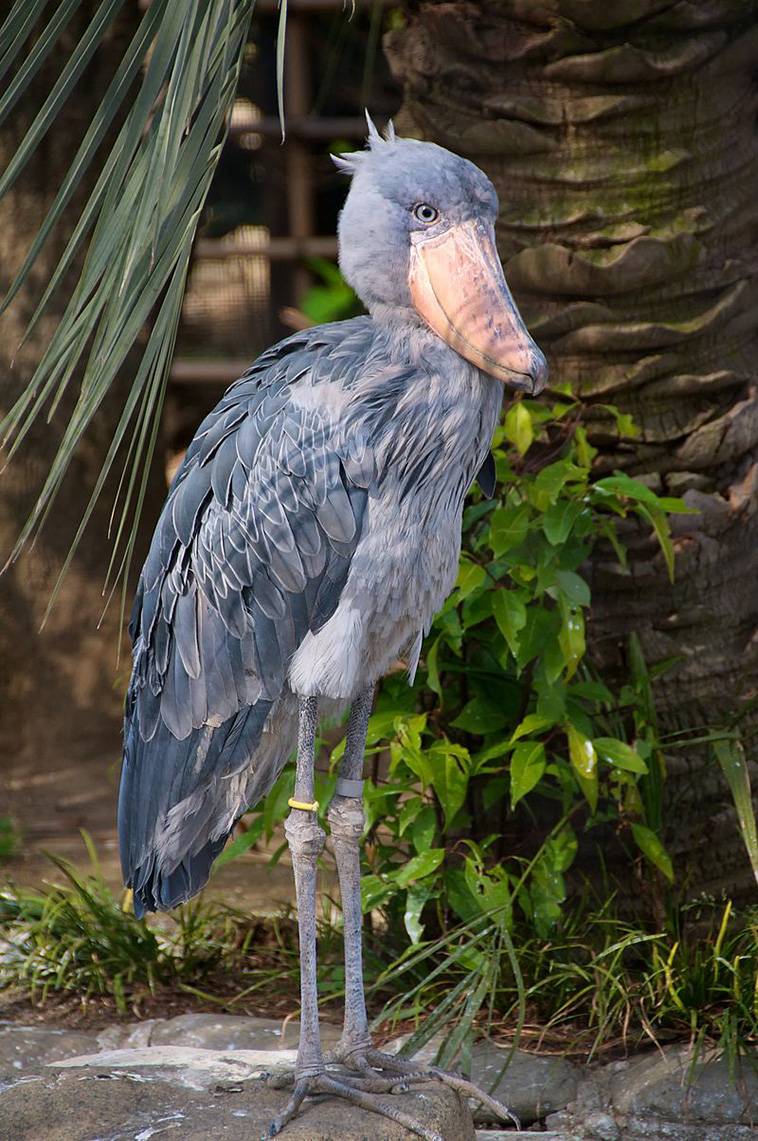
They also have long, thin legs with large feet that are ideal for walking on the vegetation in the freshwater marshes and swamps they inhabit in East Africa, from Ethiopia and South Sudan to Zambia.
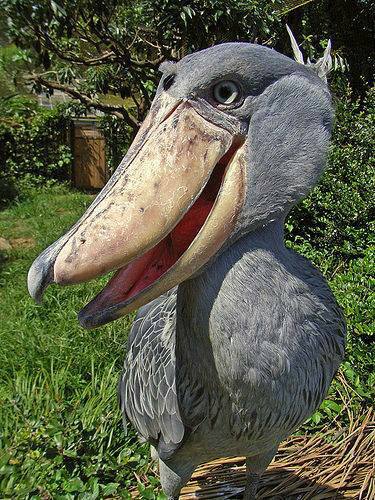
Shoebill were previously thought of as storks, but genetic research has re-classified them as members of the order Pelecaniformes and family Balaenicipitidae, which are large waterbirds, genetically closer to pelicans and herons.
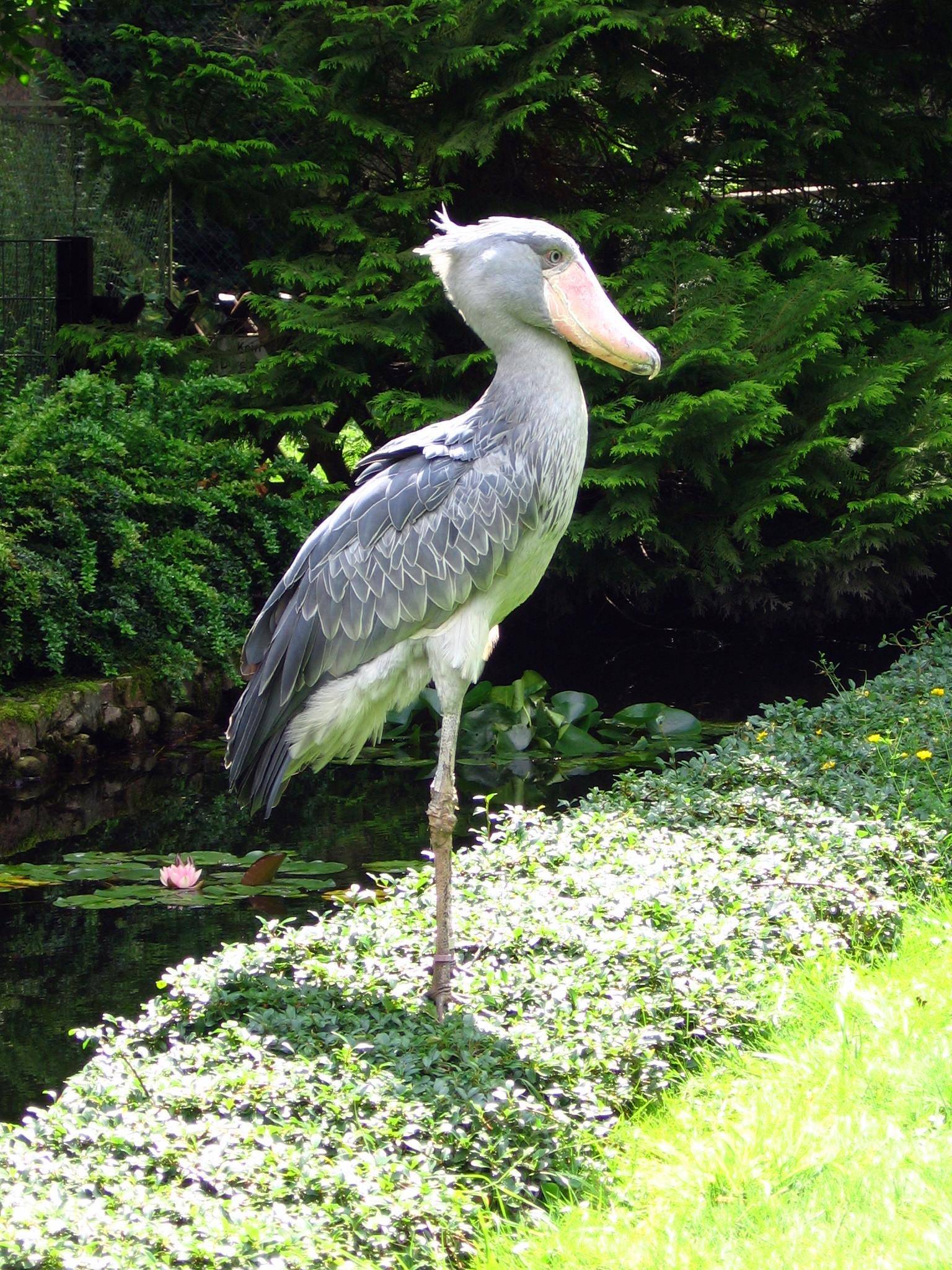
The shoebill is piscivorous, primarily eating fish – in particular lungfish, as well as bichirs, tilapia and catfish. However, it does occasionally hunt and eat other prey, such as frogs, lizards, watersnakes, snails and rodents.

The shoebill is an extremely tall bird, with long spindly legs, that allows it to stand in the shallows of swamps and on aquatic vegetation, while hunting for food. The shoebill averages between 3.5 – 4.5 feet (1 – 1.4 meters) in height, and weighs between 9 – 15.5 pounds (4 – 7 kg). It has broad wings, with an average wingspan between 7.5 – 8.5 feet (2.2 – 2.6m).
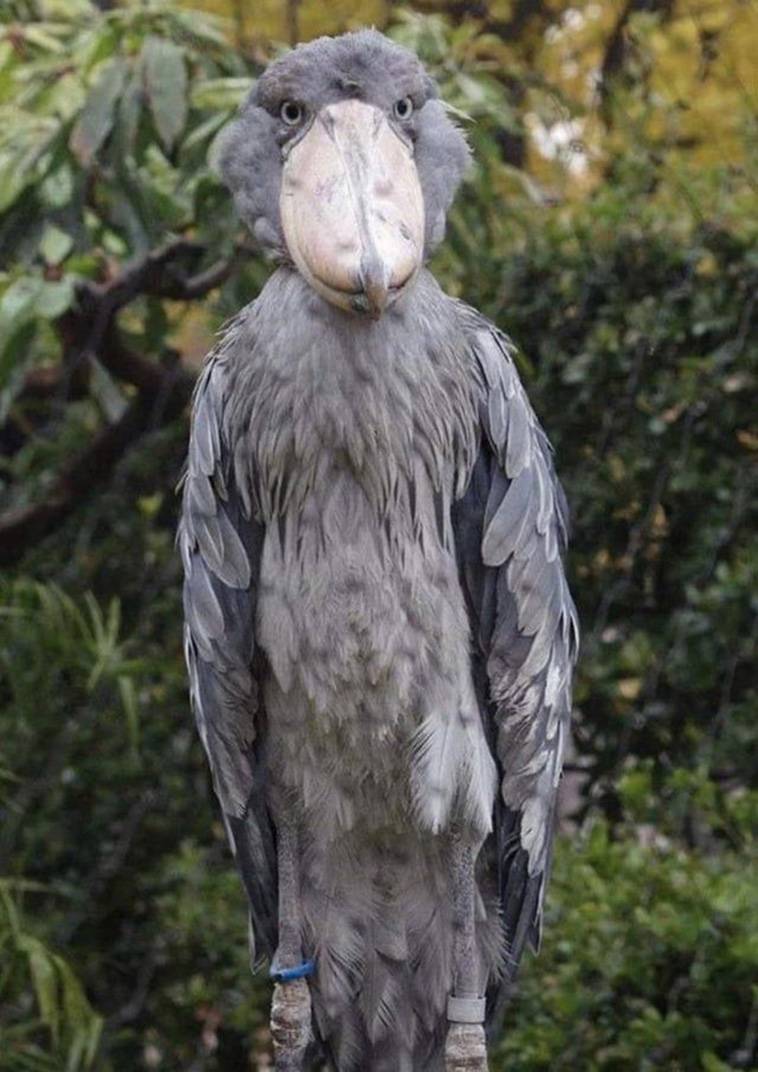
The shoebill population is particularly difficult to evaluate with accuracy, due to where they habitat and their elusive nature, but it has declined – with estimates between 5,000 – 8,000 in total.

BirdLife International has classified it as vulnerable, due to habitat destruction, disturbance and hunting. Shoebill have specific habitat requirements for breeding, nesting and hunting, and their swamps and marshes are gradually being transformed into agricultural land, or pastures for cattle grazing.
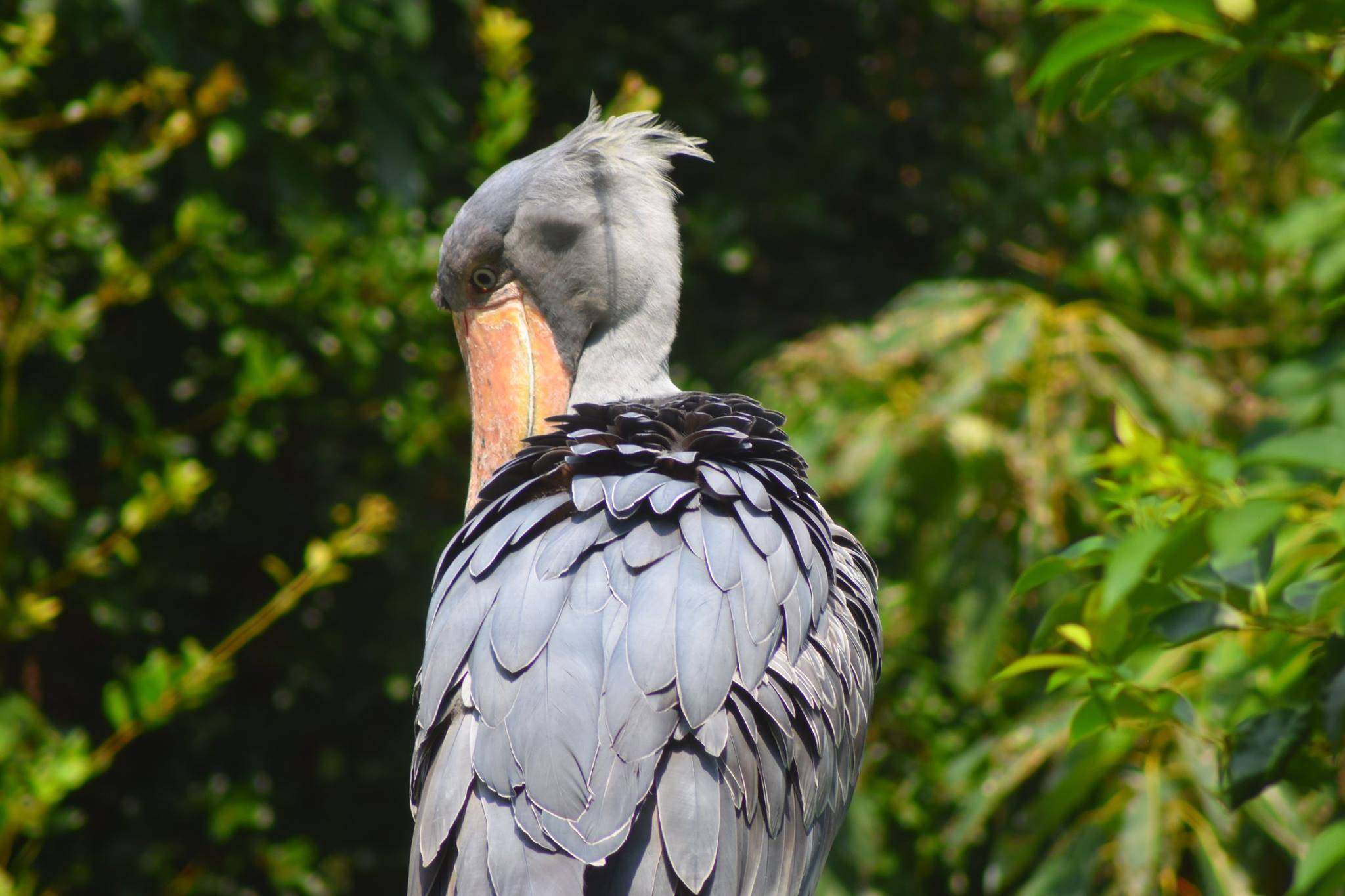
If you hadn’t noticed, they are unusual and almost dinosaur like in appearance.At times, and from certain angles, they can appear rather menacing, peering down their long, razor sharp beak, with a hook at the tip.
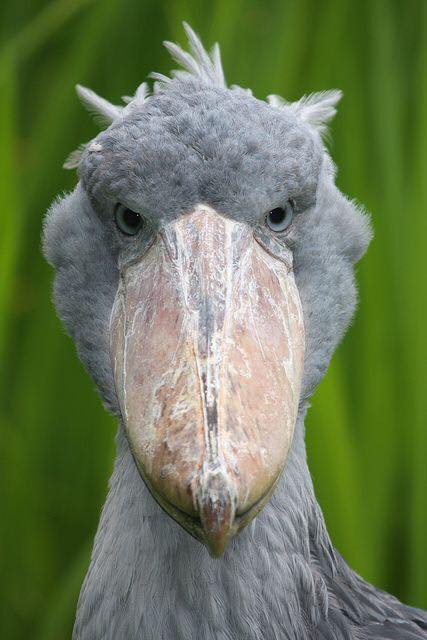
They can also be extremely cute, and almost ‘cartoon-like’. They have striking pale, blue-eyed genes, which can make them appear not really real.

The shoebill’s flapping when flying is one of the slowest of any birds, at a mere (approx.) 150 flaps per minute.Only larger stalk species have slower flapping than the shoebill.

They have the 3rd longest beak in the world, which enables them to hunt extremely large prey, even baby crocodiles.Their beaks can reach up to 24cm in length and 20cm (7.4 to 9.4 inches) in width, which helps them hunt for fish or snakes as long as 3.2 feet (1m) in size.
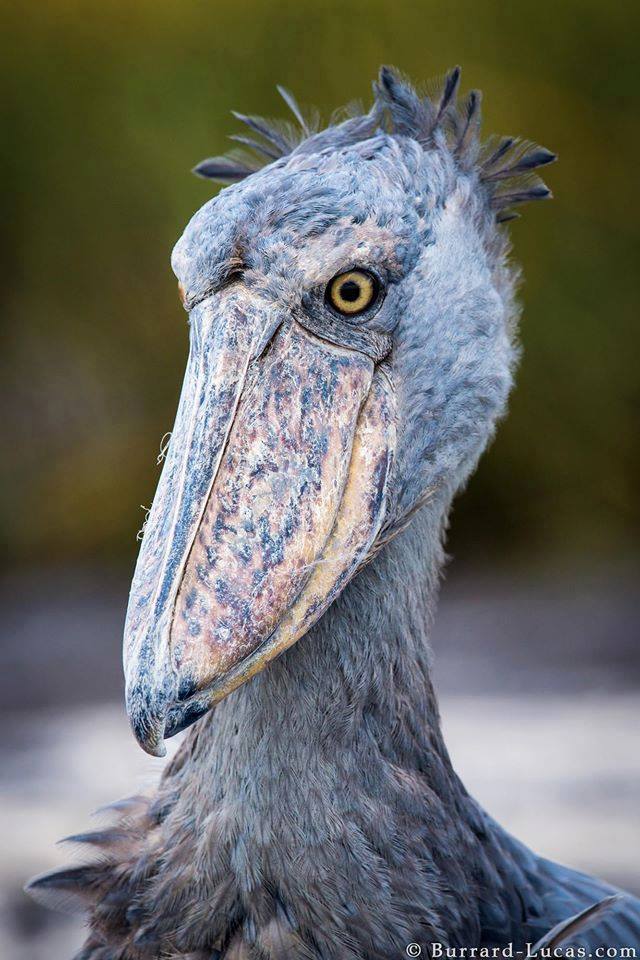
The razor sharp edges of it’s beak, allow it to decapitate their prey quickly.They are known to often behead their prey, before consuming whole.1
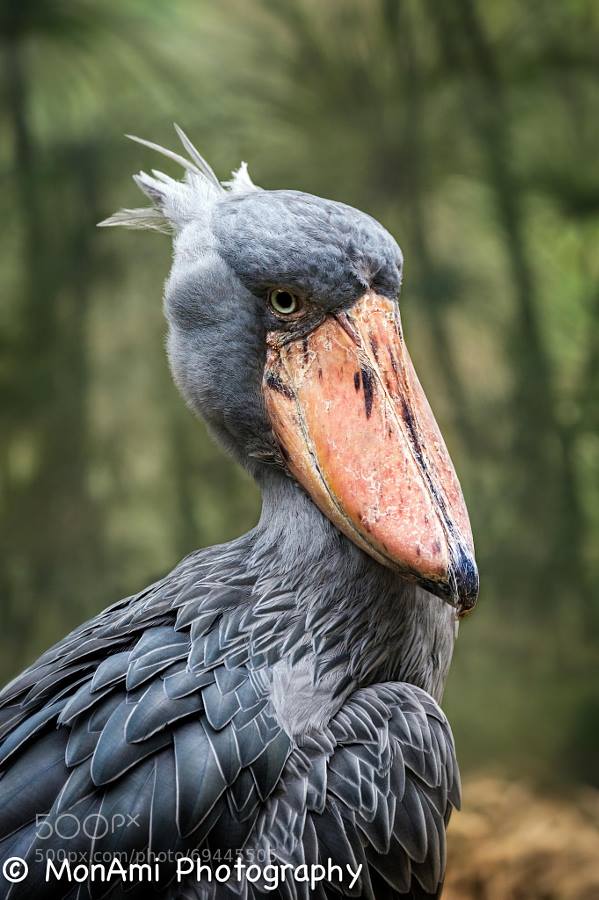
A shoebill can often benefit from the presence of hippos, which disturb fish, and bulldoze paths through swamps.The shoebill can take advantage of the disturbed fish in the water and strike.
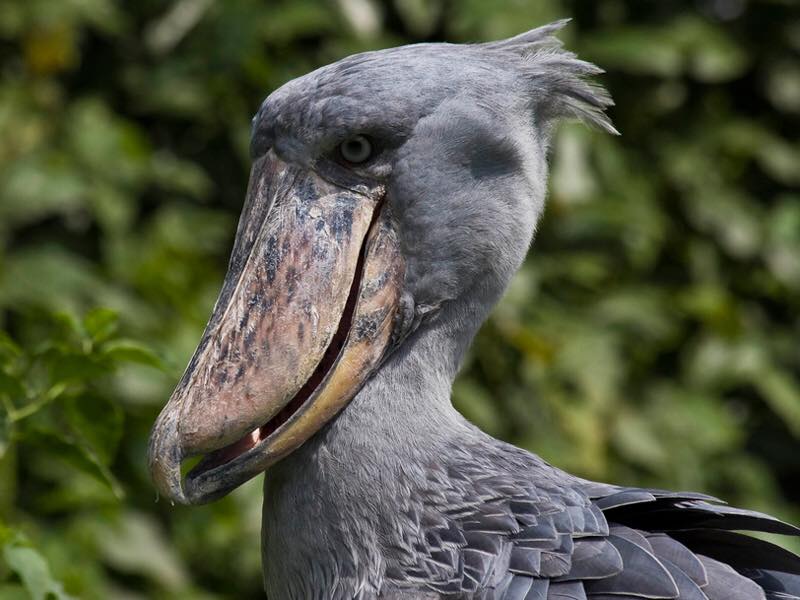
A shoebill is an ambush predator, which often stands still for long periods, motionless like a statue, before launching a vicious attack to kill any prey that come within strike distance.The shoebill often feeds at night, and is also known to stand on floating vegetation to hunt their prey.

The shoebill favours areas of poorly oxygenated water. This causes the fish living in the water to surface for air more often.
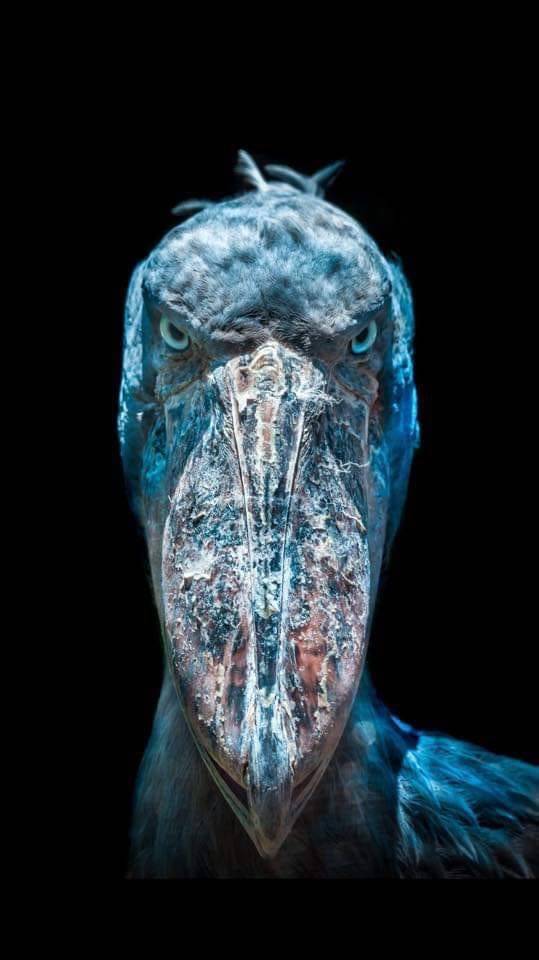
The Shoebill is usually silent, but they are known to clatter their bills loudly during courtship or greeting, which can sound a little like a machine gun.
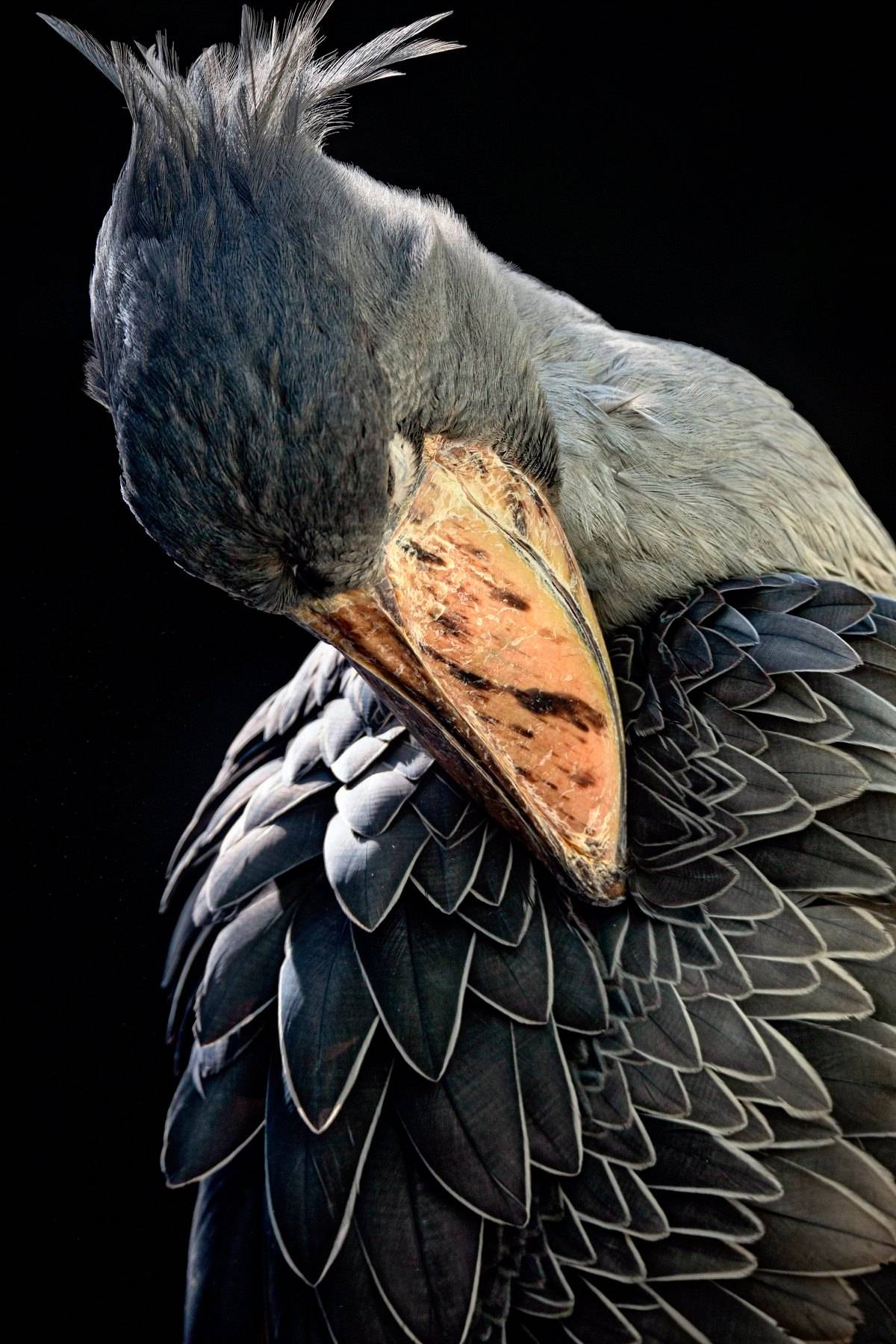
Bill-clattering is a behaviour of real storks. They can also let out a high pitched whine, and even make cow-like ‘moo’ noises.
Shoebill are solitary in their breeding habits, with typically less than 3 nests per square kilometer.
The nesting shoebill will vigorously defend their territory between 2 – 4 square kilometers (1 to 1.5 square miles) from other shoebill, and large birds.Shoebills chicks often bully, fight and can kill their siblings (known as ‘siblicide’) when only a few weeks old.
Rather disturbingly, this is actually rather common in larger birds. Often the older, and bigger chick, can hurt a smaller chick, while their parents are away from the nest eventually driving it to live away from the nest. Research suggests, this is due to energy efficiency and survival of the fittest.
The shoebill female always lays two eggs, but only one ever survives.The second egg is seen like a ‘back up’, in case anything is wrong with the first egg. Usually the first to hatch survives only. 3
The Shoebill has long fascinated civilizations. They appear in wall paintings and hieroglyphics of ancient Egyptians, and it’s old Arabic name is Abu-markub, or ‘Father of a Slipper’.





